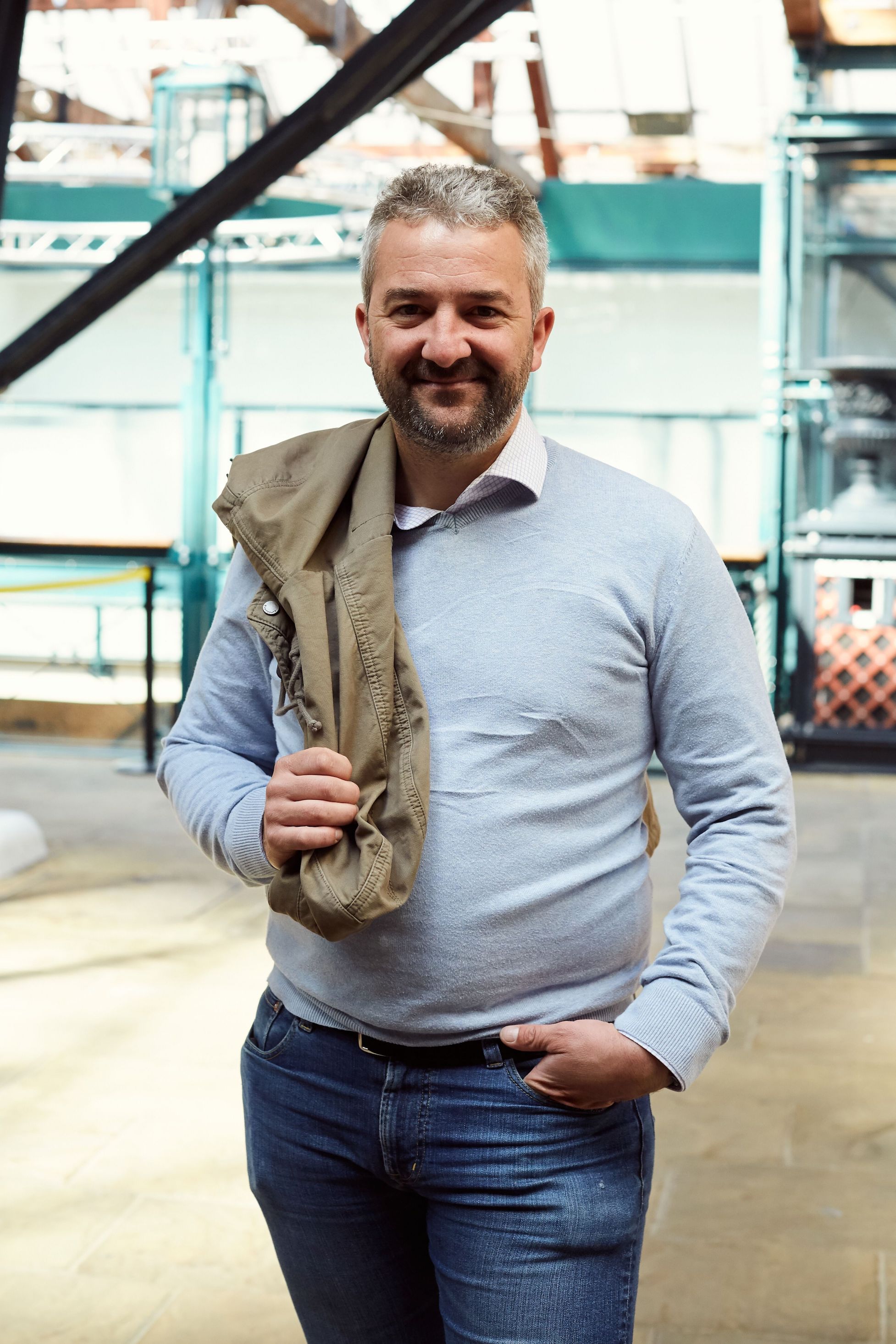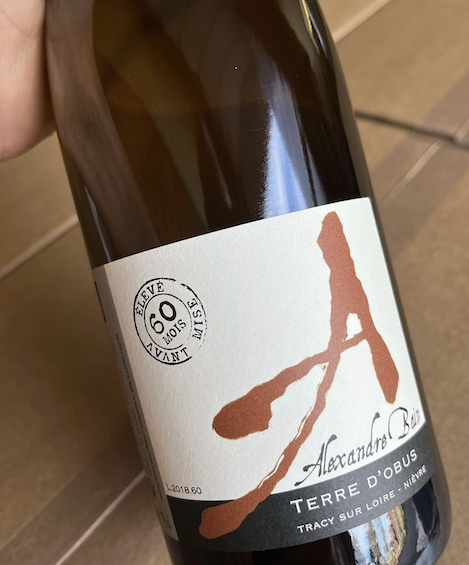
Education is everything you didn’t learn at school, or in the case of wine, on a wine course. Contrarianism, as we shall see, is in the eye of beholder.
The arrival of a new wine from Alexandre Bain prompted these Sauvistential musings. Or Alex Ban, since the appellation has for some years excluded his wines from Pouilly-Fumé on the basis of atypicality. More on this anon.
I showed Bain’s wines a few years ago to a group of wine educators and MWs to illustrate that natural wine wasn’t simply a gestural tweaking of the nose of the wine establishment. If you examine Alex’s approach in the round, it seems a perfectly logical way of making excellent wine in one’s home territory. Cuvées vinified according to terroir, studious application of organic and biodynamic methods, harvesting grapes by hand at maturity and rigorous low yields and selection of fruit. So far, so good.
If you examine Alex’s approach in the round, it seems a perfectly logical way of making excellent wine in one’s home territory.
One thing leads to another, however, and now the wine educators begin to look nervous. Natural farming is one thing, but the work in the winery is entirely different matter. Ambient ferment with native yeasts? Risky! No cold stabilisation? No use of sulphites at reception of harvest? Not topped up and potentially oxidative environment? Cement rather than stainless tank? Full malolactic conversion? No filtration or fining? No sulphites. Each lack of intervention, each deviation from the conventional oenological norm, a step towards potential disaster.
I shall be telling this with a sigh
Somewhere ages and ages hence:
Two roads diverged in a wood, and I—
I took the one less travelled by,
And that has made all the difference.
The modern Sauvignon playbook sees the oenologist focused on preserving primary aromas, acidity, and freshness. Winemaking tropes include cold fermentations and reductive/anaerobic elevage. The resultant wines lean into the green, displaying pyrazine notes of herbs, grass, peas and mint at one end of the aroma and taste spectrum, currants, passionfruit and gooseberries at the other. Many Sauvignons are made with specific yeasts that produce those familiar thiol compounds that we associate with the variety.
Bain’s wines are so different. The wines from limestone and flints have a sharpness to them. A fine minerality, if one is allowed to use that wine descriptor. Those from Kimmeridgean soils have compelling richness. The density of wine is also determined by the respective soil types. The harder Portlandian limestone encourages the vigneron to accentuate the “verticality” of the wine, whereas the Kimmeridgean-marl wines are altogether fleshier with rich bass notes.
The modern Sauvignon playbook sees the oenologist focused on preserving primary aromas, acidity, and freshness…made with specific yeasts that produce those familiar thiol compounds that we associate with the variety. Bain’s wines are so different.
Let’s return to the methodology. Bain and other practitioners of more golden Sauvignon want lower yields of optimum-quality fruit, discarding under-ripe grapes. (Their yields will be around 30 hl/ha, considerably less than half the rendement allowed by the appellation). Harvesting will often take place a week or two later than in conventionally farmed vineyards, and at the point when the skins of the grapes have become orange/purple, there is more sugar in them, and the grapes themselves naturally have greater material. From that juncture on, the grapes are handled in very particular way, in order to preserve the very qualities mentioned previously.
Basket pressing (or any slow pressing) keeps the juice in contact with the skins for as long as possible to extract phenolics will give the wine textural feel. Although one doesn’t associate Sauvignon with oak regime; wooden or cement vessels are instrumental in allowing the wines to relax. Temperature controlled fermentations are not part of the menu.
Perhaps the biggest difference is that Alex’s wines go through malolactic conversion. This makes them buttery in texture and softens the often-aggressive herbaceous notes that modern Sauvignons have. The result is a range of flavours that may approximate to quince, apple, pear and apricot; the fruit golden and warm with occasional bruised/sherry undertones, and secondary aromas of clove and cinnamon may present. The wines, having spent a period on the lees, are aged before release, in order that the various components may harmonise.
Alex Bain’s wines are not just radically different to conventional Pouilly-Fumé and Sancerre; they are different to each other. Tasted blind, and even being unfamiliar with the wines, you would sense – without difficulty – where each wine originated. Yet. Alex lost the appellation a few years ago when it was deemed by a panel on behalf of the local authority that his wines did not reflect the style of the appellation. Yes, they would mislead the consumer if they were allowed to be labelled as Pouilly-Fumé. The tiny-mindedness of this judgement beggars belief. Not only does it isolate and victimise an individual farmer for following their conscience, but it is also anticultural in that takes no account of the history of the region and the wines of the ancestors which may well have been made in this very same non-interventionist style. Alex Bain was ironically not undermining the appellation. On the contrary, he was trying to make wines that he believed were the truest expression of his terroir, and by that token, the appellation itself.
Tasted blind, and even being unfamiliar with the wines, you would sense – without difficulty – where each wine originated. Yet. Alex lost the appellation a few years ago when it was deemed by a panel on behalf of the local authority that his wines did not reflect the style of the appellation
So, back to my tasting with a small clutch of wine professionals. The reaction to Bain’s wine was real rather than mock horror. This is not Sauvignon, said one firmly. As you can imagine, my flabber was a bit gasted! Who was the contrarian here though? I had just led the tasters through every stage of the process from explanation of the terroir to an in-depth coverage of the farming methodology to the thinking underlying every decision and every process in the winery. To know something is, if not to love it, to respect it? Right?
The prevailing view on the day was that wines should rigidly adhere to a model of consistency. Everything should be “just so.” What is true Sauvignon though? If a wine made from grapes grown on a particular soil in a particular vineyard can be so different to one grown on a different soil type in a different vineyard, what is the truth other than multi-faceted? There are cultural affinities elsewhere. Alex Bain’s wines may be virtually unrecognisable as classic representations of modern Pouilly, but are identical in spirit to those that Puzelat and other natural producers in the Loire, as well as the family of biodynamic natural vignerons in Styria and central Europe.
Alex Bain was ironically not undermining the appellation. On the contrary, he was trying to make wines that he believed were the truest expression of his terroir, and by that token, the appellation itself.
The wider argument surely is that we need wine producers (artists, composers, chefs…) to push the boundaries and keep us on our toes. The fact that something is not to conventional taste does not make it wrong – or even unusual. As individuals our palates may be calibrated in totally different ways. I move in a small circle of drinkers who love intense low/sans soufre wines and would baulk at drinking identikit strip-filtered sulphured Sauvignon Bland. I grew up drinking the latter and I graduated to the former. There is still room in my life for super-good examples of modern Sauvignon, but I feel I am less the contrarian for my palate having changed over the years than those wine professionals who stubbornly insist that there is only one correct style and that they would never consider deviating from the norm!
Postscript: Having finished this piece, I opened and drank a bottle of Bain’s Terre d’Obus (see pic above), a wine that has been aged for 36 months. It felt like a wine hailing from place. It was rich, dense, mineral and energetic. Forget about the variety; it’s the farming that makes it, and the winemaking that allows the natural expression of the grape to flourish without impediment.
*
Interested in finding out more about the wines of Alexandre Bain? Contact us directly:
shop@lescaves.co.uk | sales@lescaves.co.uk | 01483 538820


